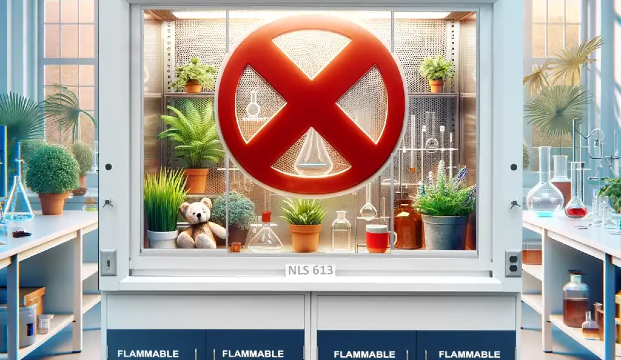Fume hoods play a crucial role in laboratories, offering vital protection for researchers and technicians from dangerous fumes, vapors, and dust. However, it’s important to remember that not everything should be placed inside a fume hood.
Improper use of a fume hood can result in reduced efficiency, compromised safety, and potential damage to equipment. This guide will cover some of the items that should be kept out of fume hoods, promoting a safe and productive workspace for everyone in the lab.
The No-Go Zone for Chemicals
Did you know that fume hoods should not be used as storage spaces for chemicals? It’s a common misconception, but storing chemicals inside a fume hood is actually unsafe and can pose serious risks. Not only does it create clutter and obstruct airflow, but it also reduces the efficiency of the hood.
To ensure safety, always store chemicals in designated storage areas and keep only the necessary amount in the hood for the procedure at hand. Hazardous chemicals like flammable liquids should be stored in approved safety cabinets.
Other Equipment
Avoid making a critical mistake by storing equipment inside a fume hood, even though the spacious area might seem tempting. The airflow within the hood can be disrupted by large items, causing inefficiency and potential exposure to hazardous substances.
To ensure proper functioning, it’s best to keep large equipment out of the fume hood.
Food Belongs in the Fridge, Not the Fume Hood
Remember to store perishables or food in a refrigerator, and this applies to the fume hood too. It’s crucial to follow this rule as introducing food or drink into a fume hood not only violates basic lab safety protocols but also puts your experiments at risk of contamination.
Paper and Cloth Materials
It’s important to keep loose paper, notebooks, or cloth materials well away from the fume hood area. Although they may appear harmless, they can disrupt airflow and pose a fire hazard if they come into contact with volatile chemicals or heat sources.
Declutter for Success
Keeping your fume hood clutter-free is crucial for its efficiency. When there’s too much clutter, airflow gets restricted, and the hood becomes less effective at capturing fumes.
To ensure optimal performance, make sure to keep the workspace inside the fume hood as clear as possible, using only the necessary items for your current procedure.
Handle Flammable Materials with Care
While fume hoods are designed to handle volatile substances, introducing flammable materials without proper precautions can be dangerous. Stay safe by confirming that your fume hood is prepared to handle the risks associated with any flammable materials you plan to introduce.
Your Head: A Fume Hood’s No-Fly Zone
Did this really need to be stated!?
A fume hood is designed to provide a protective barrier between the user and the potentially harmful or toxic substances being manipulated within the hood. Keeping your head outside of the fume hood will:
- Reduce inhalation risk
- Reduce exposure to chemical splashes and reactions
- Maintain efficient airflow in the fume hood
- Comply with safety protocols
Wrapping It Up
Maintaining safety in laboratories relies on the correct use of fume hoods. It’s crucial to refrain from using them for storage, keeping them free from clutter and large equipment, and never bringing food, drinks, or non-lab items near them. By adhering to these practices, lab workers can create a safer and more efficient workspace. Remember, the key to safety and efficiency in the lab is not just the equipment itself, but how we utilize it.
Related Articles: What Chemicals Require a Fume Hood



